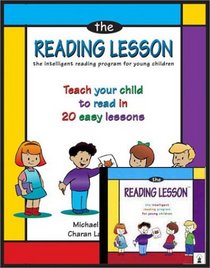Search -
The Reading Lesson with CD-ROM
The Reading Lesson with CDROM
Author:
We all want our children to read. With great pride we watch our children learn the alphabet and sing the ABC song. We buy picture books and read to them every night. When she can recognize a particular word or he can write his name, we are thrilled. But this is still far from reading the way we understand it. We try to teach reading, but often d... more »
Author:
We all want our children to read. With great pride we watch our children learn the alphabet and sing the ABC song. We buy picture books and read to them every night. When she can recognize a particular word or he can write his name, we are thrilled. But this is still far from reading the way we understand it. We try to teach reading, but often d... more »
ISBN-13: 9780913063118
ISBN-10: 0913063118
Publication Date: 3/1/2001
Pages: 448
Rating: ?
ISBN-10: 0913063118
Publication Date: 3/1/2001
Pages: 448
Rating: ?
0 stars, based on 0 rating
Publisher: Mountcastle Company
Book Type: Paperback
Members Wishing: 0
Reviews: Amazon | Write a Review
Book Type: Paperback
Members Wishing: 0
Reviews: Amazon | Write a Review




